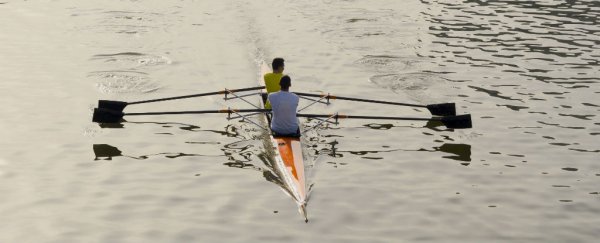Rio 2016 has been plagued with problems before it's even started, and now the results of a 16-month-long study have revealed that the water in its Olympic and Paralympic venues is a verifiable health hazard.
Not only does the water contain raw human sewage and harmful bacteria, it's harbouring viral levels so far beyond what's considered dangerous in the US, one expert called them "unheard of".
The study, commissioned by the Associated Press, found that the infectious adenovirus - a common cause of respiratory illness, cold-like symptoms, bronchitis, pneumonia, diarrhoea, and conjunctivitis - was present at nearly 90 percent of the test sites.
"That's a very, very, very high percentage," biomedical expert Valerie Harwood from the University of South Florida told the AP.
"Seeing that level of human pathogenic virus is pretty much unheard of in surface waters in the US. You would never, ever see these levels because we treat our waste water. You just would not see this."
When the first results of the study were published in March last year, it was revealed that the Rodrigo de Freitas Lagoon - the planned site for the Olympic rowing - contained a whopping 1.73 billion adenoviruses per litre.
That put its viral levels at 1.7 million times what would be considered hazardous in the US and UK, and the researchers suggested that accidentally ingesting just 3 teaspoons of the stuff would "almost certainly" infect someone with a virus.
Fortunately, since the release of these initial findings, local officials have doubled down on their efforts to clean up the Olympic waters, and the latest readings, from June, reportedly have adenovirus levels at a (still-terrible) 248 million adenoviruses per litre.
Just to put that in perspective, anything in the thousands-per-litre range would be a big deal in the States.
On the other hand, at Rio's Gloria Marina, where the sailing races will kick off, the levels of adenovirus have reportedly increased from 26 million per litre in March 2015 to over 37 million per litre in June this year.
"Don't put your head under water," was the one piece of advice Harwood had for athletes who were planning on competing.
One thing to keep in mind is that the Associated Press has yet to make its entire investigation public, so we have to take their word on these findings for now. Also worth noting is that while this all sounds alarming and definitely unacceptable, the athletes themselves aren't freaking out over it.
Former Olympian and advisor to the Australian team, Kitty Chiller, told The Sydney Morning Herald that their rowers have two very simple rules to live by on those waters:
"A - trying not to fall out of the boat. B - if they do fall out of the boat, to keep their mouth closed."
Those sentiments were echoed by Bryan Volpenhein, head coach of the US men's rowing team, who told Emmett Knowlton at Business Insider last year:
"There's not much we can do about it, other than take precautions and mentally prepare for anything that might come up. You just go out and race and hopefully you row clean enough that you're not getting splashed."
At this point, there's little hope that continued clean-up efforts will make much of a difference by the time the games actually begin, so let's just hope that if anyone does get sick, they have a medal to make themselves feel better.
